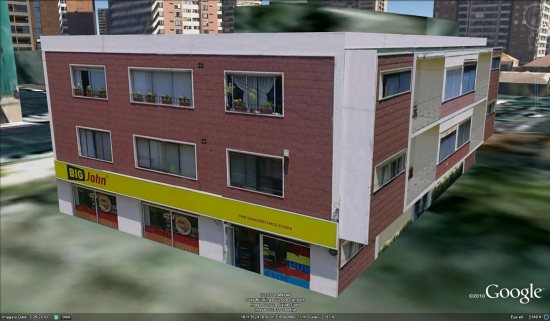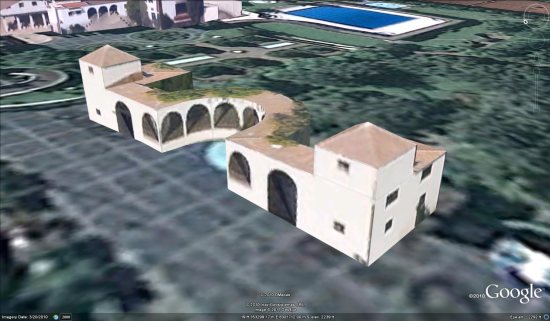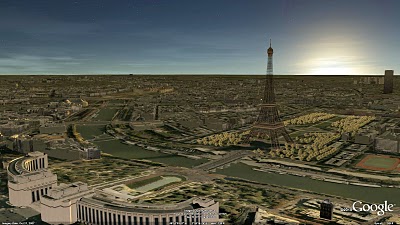Last fall, Google added the cities of Santiago and Valparaiso to their Building Maker tool. The city was already partially modeled, thanks to the work of users such as gananunez, GecKo StuDio, Sergio and jgago93.
While all of them are continuing to do great work, I want to focus a bit on jgago93. Prior to Building Maker arriving in Chile, he had done a variety of excellent models in SketchUp. Below is an example of a convenience store (and apartments?) that he created. Notice the excellent textures he used, including the 3d railings on the right side of the building:

Since Building Maker is now available over there, he’s made excellent use of it. Many of his recent models were created with Building Maker, and as of today he’s generated a total of 108 models, 74 of which are already included in Google Earth!
His Builder Maker models are quite well done, too. For example, notice the building below. While the textures are rather fuzzy (not much he can do about that), he obviously spent a good bit of time to make sure the architecture was accurate:

Because of Building Maker and 3D modelers like the people we mentioned above, these cities (particularly Santiago) are becoming quite filled with 3D models are are looking excellent. Hopefully Google will bring StreetView to that area soon, as that will result in even better-looking models.
Have you done much with Building Maker lately? Leave a comment and show off some of your best work!
